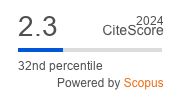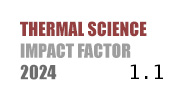ABSTRACT
The energy consumption of prefabricated buildings under multi-layer building materials system is affected by different weight factors. In order to improve the level of energy consumption prediction, a method of energy consumption prediction of prefabricated buildings under multi-layer building materials system based on KPCA - WL SSVM is proposed. Taking indoor ambient temperature, lighting conditions, utilization rate of electric facilities, etc. as the combined weight of assembled building energy consumption under multi-layer building materials system structure, the energy consumption simulation and energy consumption allocation model of assembled building under multi-layer building materials system structure controlled by multi-component energy consumption parameter support vector machine is established, and the support vector machine based on KPCA - WL SSVM and principal component analysis dynamic fitting method are adopted. The energy consumption parameters of prefabricated buildings under multi-layer building materials system structure are detected and estimated, and the energy consumption patterns, energy consumption distribution with different characteristics and energy consumption prediction model parameters of prefabricated buildings under multi-layer building materials system structure are obtained. Then, the emission factor and power consumption factor prediction model of prefabricated buildings under multi-layer building materials system structure is established, and the dynamic prediction and evaluation of energy consumption of prefabricated buildings under multi-layer building materials system structure are realized. The test results show that the fitting degree of energy consumption prediction of prefabricated buildings under multi-layer building material system structure is high, the model optimization design of energy consumption of prefabricated buildings is realized, the prediction accuracy of building energy consumption is good, and the energy consumption can be effectively reduced.
KEYWORDS
PAPER SUBMITTED: 2022-06-20
PAPER REVISED: 2022-07-10
PAPER ACCEPTED: 2022-08-04
PUBLISHED ONLINE: 2022-10-02
THERMAL SCIENCE YEAR
2022, VOLUME
26, ISSUE
Issue 5, PAGES [4031 - 4042]
- Sun, H., Prediction of Building Energy Consumption Based on BP Neural Network, Wireless Communications and Mobile Computing, 35 (2022), 4, pp. 135-143
- Zhou, X., et al., Generation and Verification of Vertical Meteorological Data for Building Energy Simulation from a 325 Meter Beijing Meteorological tower, Energy and Buildings, 37 (2022), 9, pp. 30-37
- DBSCAN-like Clustering Method for Various Data Densities, Pattern Analysis and Applications, PAA, 23 (2020), 2, pp. 541-554
- Godois, L. M., et al., A Multi-Agent-Based Algorithm for Data Clustering, Progress in Artificial Intelligence, 9 (2020), 4, pp. 305-313
- Khan, I., et al., Variable Weighting in Fuzzy k-Means Clustering to Determine the Number of Clusters, IEEE Transactions on Knowledge and Data Engineering, 32 (2020), 9, pp. 1838-1853
- Ridwana, I., et al., Modelling of Building Energy Consumption by Integrating Regression Analysis and Artificial Neural Network with Data Classification, Buildings, 10 (2020), 11, 198
- Sun,, X. J., Design of Building Energy Consumption Monitoring Model Based on Parallel Cloud Computing, International Journal of Global Energy Issues, 42 (2020), 5-6, pp. 457-469
- Kai, L., Jie, L., Structure-Fuzzy Multi-Class Support Vector Machine Algorithm Based on Pinball Loss, Journal of Computer Applications, 41 (2021), 11, pp. 3104-3112
- Jiale, G., Research on Application Potential Prediction Method for Urban Energy System Based on Decision Tree, International Journal of Global Energy Issues, 42 (2020), 3-4, pp. 144-161
- Kim, Y.-J., et al., Comparison of Linear and Non-Linear Statistical Models for Analyzing Determinants of Residential Energy Consumption, Energy and Buildings, 223 (2020), Sept., pp. 110226.1-110226.13
- Redmon, J., et al., You only Look Once: Unified, Real-Time Object Detection, Proceedings, IEEE Conference on Computer Vision and Pattern Recognition. Piscataway: IEEE, Las Vegas, Nev., USA, 2016, pp. 779-788
- Othmen, I., et al., Sensitivity Analysis of the Transient Heat and Moisture Transfer in a Single Layer Wall, European Journal of Environmental and Civil Engineering, 24 (2020), 13-14, pp. 2211-2229
- Wei, S., and Bai, X., Multi-Step Short-Term Building Energy Consumption Forecasting Based on Singular Spectrum Analysis and Hybrid Neural Network, Energies, 15 (2022), 5, pp. 1743-1748
- Duan, H., et al., Characterizing Regional Building Energy Consumption under Joint Climatic and Socioeconomic Impacts, Energy, 331 (2022), 14, pp. 127-131
- Fu, Q., Building Energy Consumption Prediction Using a Deep-Forest-Based DQN Method, Buildings, 12 (2022), 2, pp. 131-136
- Zhou, Q., Ooka, R., Implementation of a Coupled Simulation Framework with Neural Network and Modelica for Fast Building Energy Simulation Considering Non-Uniform Indoor Environment, Building and Environment, 38 (2022), 04, pp. 292-295
- Singh, M., Sharston, R., Quantifying the Dualistic Nature of Urban Heat Island Effect (UHI) on Building Energy Consumption, Energy and Buildings, 35 (2022), 1, pp. 79-87
- Wenninger, S., et al., Explainable Long-Term Building Energy Consumption Prediction Using QLattice, Applied Energy, 45 (2022), 2, pp. 101-109
- Liu, W., et al., Robust Texture Representation by Combining Differential Feature and Haar Wavelet Decomposition, Journal of Computer Applications, 40 (2020), 9, pp. 2728-2736
- Gan, J., et al., Spatial-Temporal Texture Cascaded Feature Method for Face Liveness Detection, Pattern Recognition and Artificial Intelligence, 32 (2019), 2, pp. 117-123
- Alsharif, R., Machine Learning-Based Analysis of Occupant-Centric Aspects: Critical Elements in the Energy Consumption of Residential Buildings, Journal of Building Engineering, 37 (2022), 10, pp. 125-133

